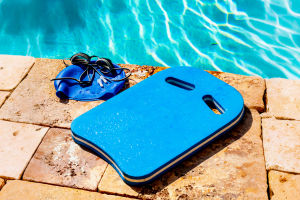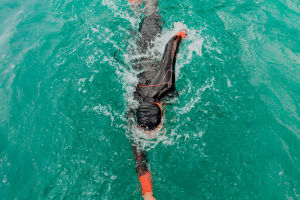When it comes to swimming, many individuals instinctively aim to go faster. It’s a natural response: the quicker you swim, the more it seems you are making progress.
However, swimming slowly and with control can often be the secret to truly improving your technique and efficiency. If you want to enhance your swimming skills, reduce unnecessary effort, and improve your overall performance, it's time to embrace the power of slow swimming.
Why Swimming Slowly Makes You a Better Swimmer?
Improved Technique Awareness
When swimming too quickly, the focus often shifts to speed and endurance. This can lead to technical mistakes, such as inefficient strikes, improper kicks, and labored breathing.
Swimming at a slower pace allows swimmers to pay attention to every movement, making it easier to focus on body position and correct technical flaws.
Better Breath Control
Proper breathing is essential in swimming. If you're constantly out of breath, it indicates your breathing isn't properly synchronized with your strikes. Slow swimming gives you the time needed to coordinate your breathing, improving lung capacity and conserving energy.
Enhanced Water Sensitivity and Resistance
Feeling the water is crucial for any swimmer. The more relaxed and in harmony the body is with the fluid, the less energy is wasted. Experienced swimmers understand that speed comes not just from power but also from the ability to glide smoothly through the water. Slow swimming helps develop this essential water feel.
Specific Strength Development
Swimming slowly requires each muscle group to work at its full potential. This helps in strengthening the strike, improving core stability, and making every movement more efficient. By swimming at a controlled pace, the muscles must engage properly, resulting in better overall strength and endurance.
Reduced Stress on Joints and Lower Risk of Injury
While swimming is generally a low-impact sport, fast and chaotic strike can lead to stress on the shoulders and back. A slower, more controlled pace helps keep the body aligned, reducing the risk of strain or injury, and promoting better long-term joint health.
How to Integrate Slow Swimming into Your Training?
To truly benefit from slow swimming, it should be intentionally incorporated into your training sessions. Here are some strategies to help you make the most of a slower pace in the water:
Warm-Up at a Controlled Pace
A proper warm-up is essential for every training session. Begin by swimming 400-600 meters at a relaxed, controlled pace. Focus on your strike technique, body position, and breathing to set the tone for the rest of your session.
Technique Drills at a Slow Pace
Incorporate drills that emphasize key aspects of your technique while swimming at a slow pace. For example:
- Strike length: Work on extending each strike and perfecting your catch phase. Aim to reduce the number of strikes taken per lap to improve efficiency.
- Effective kicking: Use a kickboard to isolate your legs and work on your kicking technique, helping to build strength and control.
- Body position: Maintain a horizontal body position with minimal effort. A slow pace allows for better awareness of body alignment and water grip.
Controlled Swimming Sets with Varying Speeds
While it's important to swim slowly, alternating between slow and faster-paced intervals can offer a balanced approach. For example, try 4 sets of 100 meters, swimming the first 50 meters at a slow pace and the next 50 meters at an increasing speed. Similarly, 200-meter sets can focus on streamlining and strike efficiency.
Active Cool-Down with Slow Swimming
After an intense training session, it's crucial to cool down effectively. Swim 200-300 meters at a leisurely pace to relax your muscles, enhance recovery, and consolidate the technique you've been practicing.
Why Slow Swimming Is the Key to Faster Performance?
It might seem counterintuitive, but mastering slow swimming can make you faster in the long run. By focusing on technique, control, and strength, swimmers can refine their skills and increase their speed when it matters most. Next time you hit the water, try slowing down and paying close attention to your movements. The result will not only be better technique but also greater overall performance.
In swimming, success isn’t just about speed – it’s about swimming better.


